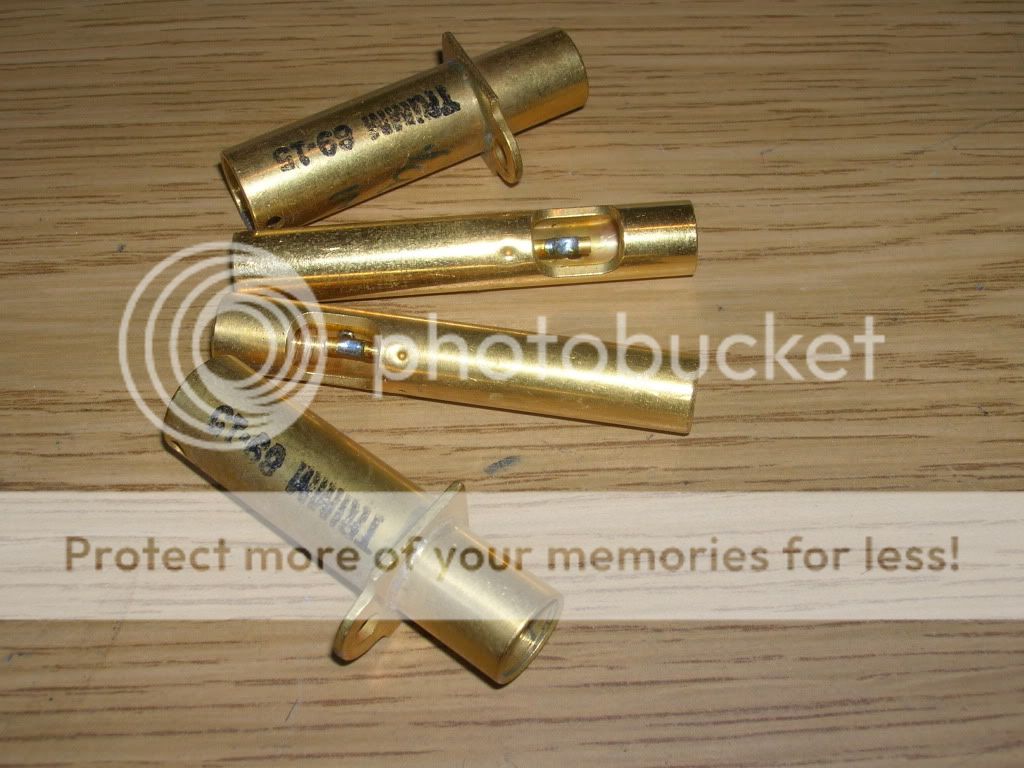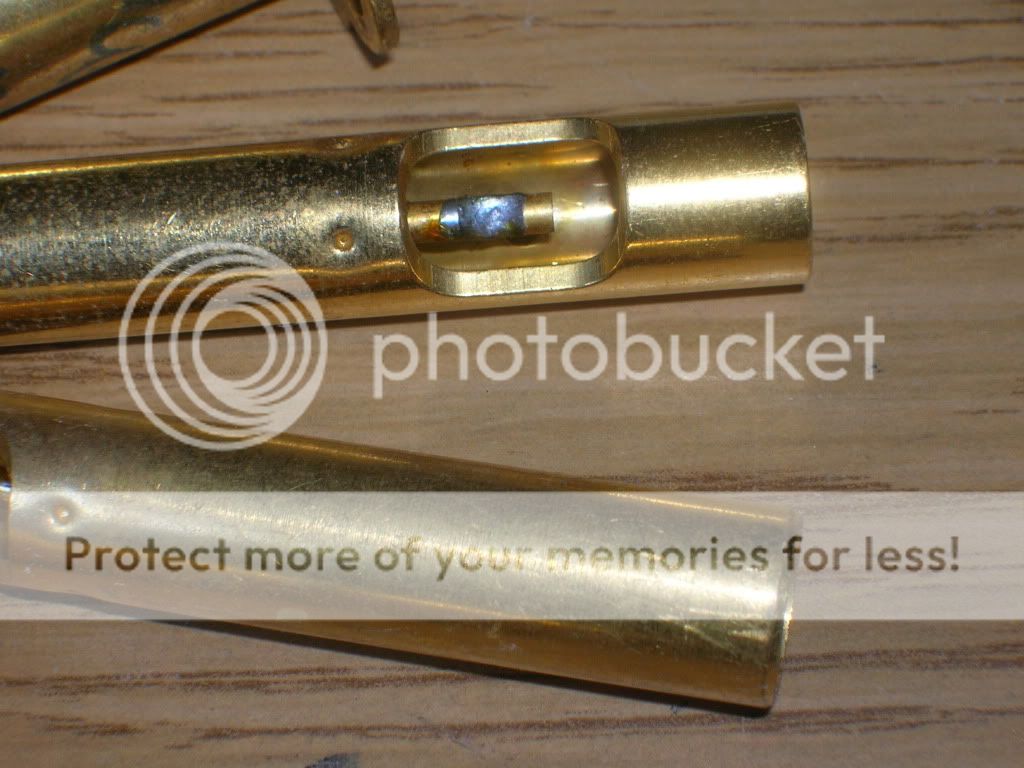element47.5
Well-known member
- Joined
- May 10, 2012
- Messages
- 295
I've come into a respectable pile of the material pictured below. The items are male and female connectors from a video patchbay. I have some reason to believe that the gold plating is on the thick side, since these connectors were made to be plugged in and out many times. These are coax connecters, and as can be seen on the second and third pix, there is an inner conductor (with a blob of solder on it) suspended in a plastic bushing. The plastic is insanely difficult to remove, and I'd like not to have to bandsaw each of these in half. It may be possible to develop some kind of jig and use a punch to drive the plastic bushing out.
I understand that an HCl treatment would be wise to get rid of any solder. But I am concerned that "anything" I do to these will expose (I assume brass, but I could be wrong) underneath the gold plating) and obviously I don't want brass metals in anything designed to dissolve gold. And yet I have doubts that HCl would dissolve away the primary metal of the "tube", eg; the substrate on which the gold is plated.
Should I incinerate these, and thereby carbonize/destroy the plastic, hope to scrape it out, wash with HCl, then treat the connector "tube" as if it's a giant pin and do the AP process? Or something else that's escaping me at present.
Just looking for opinions as to procedure. Many thanks in advance!



I understand that an HCl treatment would be wise to get rid of any solder. But I am concerned that "anything" I do to these will expose (I assume brass, but I could be wrong) underneath the gold plating) and obviously I don't want brass metals in anything designed to dissolve gold. And yet I have doubts that HCl would dissolve away the primary metal of the "tube", eg; the substrate on which the gold is plated.
Should I incinerate these, and thereby carbonize/destroy the plastic, hope to scrape it out, wash with HCl, then treat the connector "tube" as if it's a giant pin and do the AP process? Or something else that's escaping me at present.
Just looking for opinions as to procedure. Many thanks in advance!















































































